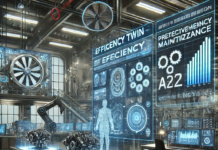The landscape of daily life is undergoing evolution, with Spatial Computing at the helm. Industry projections show a marked rise in the AR/VR B2C sector, from $31.12 billion in 2023 to a whopping $52.05 billion by 2027. This increase represents a 67% growth in merely four years, evidence of Spatial Computing’s increasing stride. This transformative technology encompasses a spectrum, from real-world interactions to computer-generated realities. These include Augmented Reality (AR), Mixed Reality (MR), and Virtual Reality (VR).
AR, a significant segment of Spatial Computing, enhances our experiences. Brands like Lumus and Elbit provide innovative solutions. Lumus’s Z-Lens, for example, blends AR with consumers’ vision prescriptions, omitting the need for inserts. The result is a comfortable, natural-looking eyewear experience with AR/MR capabilities.
Simultaneously, Mixed Reality adds an interactive layer to reality. Devices such as Apple Vision Pro integrate digital elements into physical surroundings. In addition, VR presents an immersive digital environment, with Meta Quest 2 providing a full VR experience.
The impact of Spatial Computing on work, play, and education is momentous. Projections indicate a staggering 1.4 billion devices worldwide will possess AR capabilities by 2024. Today, consumers are eagerly adopting AR for diverse activities, including gaming, shopping, and real-time GPS navigation. Spatial Computing enhances experiences, offering immersive 3D visuals, sounds, and haptics.
In the work sphere, Spatial Computing facilitates holographic calls and collaborations, redefines design processes, and enables real-time translations. For leisure, it enables AR games and fashion pieces, enhances audio experiences, and even allows for lyric-displaying karaoke glasses. In education, interactive learning and virtual trips bring lessons to life, while instant notetaking facilitates student engagement.
The shift to near-to-eye displays spells a lessened reliance on smartphones. In 2023, global smartphone sales declined by 14%, while AR glasses sales rose by over 45%. This shift is attributed to reflective waveguide technology, the heart of AR glasses, known for its excellent battery efficiency and brightness. In conclusion, spatial computing, championed by pioneers like Lumus, is poised to redefine how humans interact with their environment and each other. With such potential, the future of work, leisure, and education looks increasingly dynamic and immersive.








